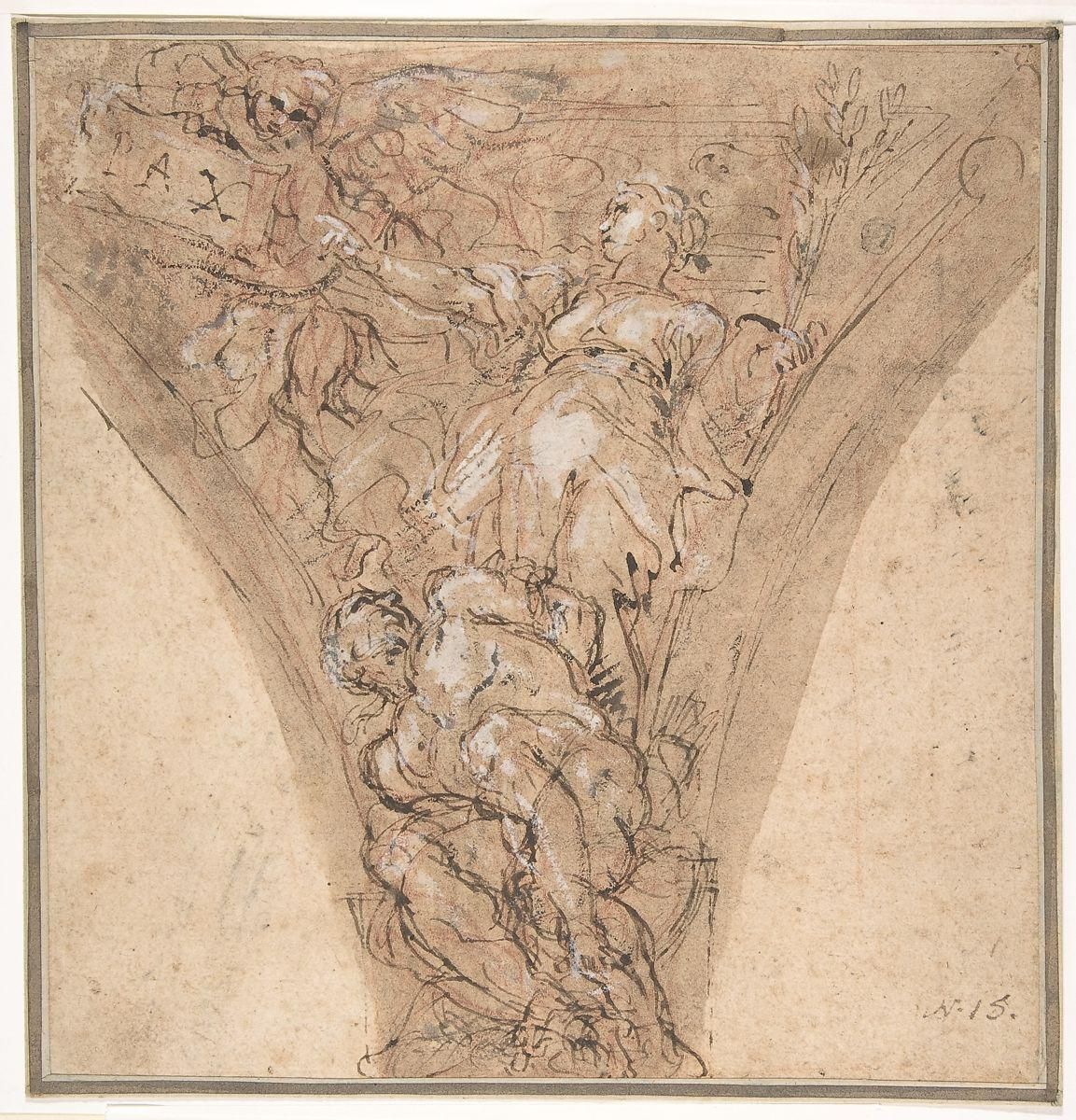
Allegorical Figure of Peace
Maratti, the last major artist of the classical tradition that originated with Raphael, worked in a monumental decorative style that brought him official patronage and international renown. In 1674 he was commissioned by Pope Clement X Altieri (r. 1670-1674) to decorate the audience room of the family palace in Rome (Palazzo Altieri), and he prepared a complex decorative scheme for every part of the room. The room remained unfinished, however, because of the pope's death in 1676; only the fresco on the main vault was completed.
This drawing intended for a spandrel, one of the many unexecuted compositions, shows Peace holding an olive branch, pointing to an angel with a plaque inscribed "PAX," and triumphing over the bound Fury of Hell below. Consistent with the description of this figure provided by Maratti's biographer, Giovanni Pietro Bellori, who devised the content of the painted decoration, Peace holds an olive branch and tramples underfoot a shackled Fury symbolizing War, whose bellicosity is vanquished: "Siegue la Pace apportato al mondo con l'umanità di Cristo, a' cui piedi gilace it Future d'Averno incatenato; tiene ella in una mano il ramo dell'olivo e con l'altra addita un angiolo che spiega it motto: ET IN TERRA PAX" (from Bellori's Life of Carlo Maratti).
For other preparatory studies by Carlo Maratti in the Metropolitan Museum of Art for the decoration of Palazzo Altieri see inv. nos. 64.295.1 and 61.169 (Virtue crowned by Honor), 66.137 (Allegory of Divine Wisdom or Divina Sapienza), 2008.334.1 (Study of a Putto), and 65.206 (Plan for a Ceiling and Nude Figures).
Credit: Rogers Fund, 1966
1625-1713
Pen and brown ink, highlighted with white gouache, over red chalk, on light brown washed paper (the form of the spandrel is indicated in brown wash)
24.1 x 23.1 cm
66.53.3
Image and text © Metropolitan Museum of Art, 2019
Where you'll find this

The Metropolitan Museum of Art
Permanent collection





